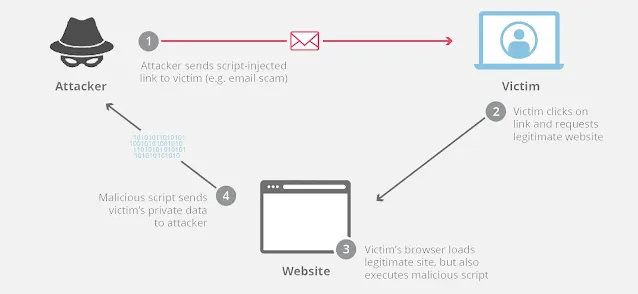How to Prevent XSS on Your Website: A Comprehensive Guide
Protect your website from cross-site scripting (XSS)
Welcome, dear visitors of the Content Random, to this new article about Cross-site scripting (XSS) is a type of web security vulnerability that allows attackers to inject malicious scripts into web pages viewed by unsuspecting users. XSS attacks can cause serious damage, including stealing sensitive data, session hijacking, and distributing malware. As a website owner, it's essential to protect your site from XSS attacks to ensure the safety of your visitors and your business. In this article, we'll provide a comprehensive guide on how to prevent XSS on your website.
Read also : How to Prevent SQL Injections on Your Website
How to Prevent XSS on Your Website: Best Practices
1- Validate InputOne of the most effective ways to prevent XSS attacks is to validate user input. Input validation ensures that only valid and expected data is accepted and processed by your website. This can be done using a combination of client-side and server-side validation techniques.
2- Sanitize User InputEven if you validate input, it's still possible for attackers to bypass this control and inject malicious code. That's why it's crucial to sanitize user input, which involves removing any unwanted or potentially dangerous characters from user input. Use a dedicated library or built-in functions to sanitize input and prevent XSS attacks.
3- Use Content Security Policy (CSP)Content Security Policy (CSP) is a security standard that allows website owners to control which resources are loaded on their site. By specifying a CSP, you can prevent unauthorized scripts from running on your site and minimize the risk of XSS attacks.
4- Implement HttpOnly and Secure Flags for CookiesCookies are commonly used to store user data and session information. However, they can also be used by attackers to carry out XSS attacks. To prevent this, set the HttpOnly and Secure flags for cookies. The HttpOnly flag prevents cookies from being accessed by JavaScript, while the Secure flag ensures that cookies are only transmitted over HTTPS.
5- Escape OutputAnother effective technique to prevent XSS attacks is to escape output. This involves converting special characters, such as < and >, to their corresponding HTML entities. By doing so, you can ensure that user input is displayed as plain text, rather than as executable code.
6- Use a Web Application Firewall (WAF)A Web Application Firewall (WAF) is a security tool that filters and blocks malicious traffic before it reaches your web application. A WAF can detect and prevent a wide range of attacks, including XSS attacks, and provide an additional layer of security for your website.
FAQs
Q: What is an XSS attack?
A: An XSS attack is a type of web security vulnerability that allows attackers to inject malicious scripts into web pages viewed by unsuspecting users.
Q: Why is preventing XSS attacks important?
A: Preventing XSS attacks is important because it can cause serious damage, including stealing sensitive data, session hijacking, and distributing malware.
Q: How can I prevent XSS attacks on my website?
A: You can prevent XSS attacks on your website by validating and sanitizing user input, using Content Security Policy (CSP), implementing HttpOnly and Secure flags for cookies, escaping output, and using a Web Application Firewall (WAF).
Conclusion
XSS attacks can have serious consequences for both website owners and users. However, by following these best practices and techniques, you can protect your website from XSS attacks and ensure the safety of your visitors. Implementing these measures will require some effort, but the benefits of a secure website far outweigh the costs. So, take the necessary steps to prevent XSS on your website today.







